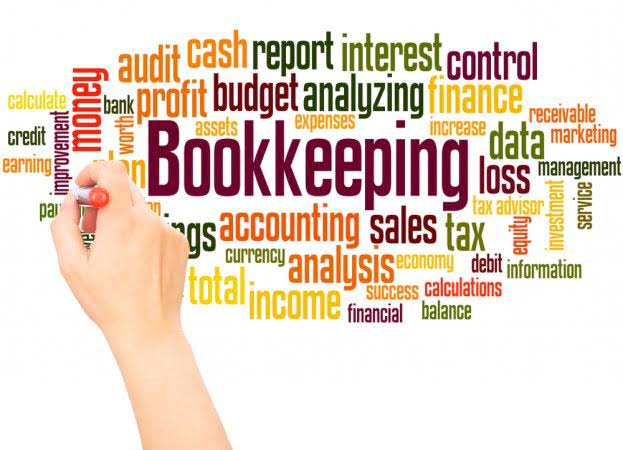
Therefore, with the increase in the volume of purchases, the rate of discount also increases in general. A trade discount is a reduction in the listed price of a product or service, offered by the seller to the buyer. It is commonly used in business-to-business (B2B) transactions as an incentive for buyers to purchase in bulk or to encourage customers to purchase more frequently. The trade discount is typically provided based on the quantity of the purchase or the frequency of orders. In a typical supply chain, manufacturers sell to wholesalers, who then sell to retailers.
Journal Entry for Trade Discount
Additionally, the trade discount program helped ABC Pharmaceuticals strengthen their distributor relationships and secure long-term partnerships. Negotiation plays a crucial role in obtaining favorable trade unearned revenue discounts. By effectively negotiating trade discounts, businesses can secure more substantial savings and establish stronger partnerships with their suppliers. For example, a retailer may negotiate a higher trade discount by committing to purchase a certain quantity of products over an extended period, ensuring a win-win situation for both parties. The trade discount may be stated as a specific dollar reduction from the retail price, or it may be a percentage discount.
How to calculate a cash discount and trade discount?

These discounts can vary in form and purpose, but they all aim to benefit both the seller and buyer. A cash discount, on the other hand, is calculated on the invoice price of the items. Suppliers or wholesalers https://www.bookstime.com/articles/real-estate-accounting usually provide their buyers with a credit period. As a way to generate more sales and encourage customers, trade discounts are offered on the list price. This means that any purchases will be based upon the net price (list minus discount).
- Seasonal discounts are a strategic tool for balancing supply and demand, ensuring that businesses can maintain a healthy turnover of goods throughout the year.
- For instance, a retailer might negotiate a 5% discount for agreeing to purchase a certain volume of goods over a year, providing the supplier with a guaranteed revenue stream.
- By offering a 20% discount on large orders, ABC Pharmaceuticals motivated their distributors to stock up on their products.
- Their purchase went up 13% in comparison to the previous year to 1.9 million barrels a day.
- Tools like QuickBooks and SAP ERP systems can automate these calculations, ensuring accuracy and saving time.
- This is a well-known sales promotion strategy and hits the demand side of any product.
- This mutually beneficial arrangement ensures that both suppliers and customers can reap the benefits of cost savings.
Why Discounts Aren’t Always Straightforward
As businesses navigate the ever-changing and competitive landscape, trade discounts can be a powerful tool to boost profits and drive success. In the realm of business, trade discounts play a vital role in boosting profits through cash savings. This concept is often misunderstood or overlooked, yet it holds immense potential for businesses to enhance their bottom line.
Comparison between trade discount and cash discount
- Further, no recording of such discount is made in the books of accounts.
- By leveraging such tools, businesses can streamline their discount management processes and focus on strategic decision-making.
- You can usually find this price listed in the manufacturer’s catalog or on their website.
- By offering and negotiating trade discounts, businesses can enhance their relationships, improve cash flow, and maintain competitive pricing.
- By encouraging customers to purchase in larger quantities, the supplier can streamline their operations and pass on the savings to the buyer.
Retailers often use these discounts to clear out inventory at the end of a season, making room for new stock. For instance, a clothing retailer might offer substantial discounts on winter apparel as spring approaches. These discounts help sellers manage inventory levels and cash flow more effectively by converting stock into revenue more quickly.

Operating vs Finance Leases: Differences, Accounting, and Impact
This means that if the buyer pays within 10 days of delivery, they can avail extra 2% discount on the invoice price. Cash discount is a deduction allowed by a supplier of goods or by a provider of services to the buyer from the invoice price. A trade-in allowance is a discount given for returning an old item when buying a new one.

Instead, it would only record revenue in the amount invoiced to the customer. A trade discount is the amount by which a manufacturer reduces the retail price of a product when it sells to a reseller, rather than to the end customer. The reseller does not necessarily resell at the suggested retail price; selling at a discount is a common practice, if the reseller wishes to gain market share or clear out excess inventory. Trade discounts are a crucial element in the business world, offering benefits to both buyers and sellers. These reductions from the list price can significantly influence purchasing decisions, inventory management, and overall profitability. As we discussed above, using a trade discount calculator increases the purchase quantities.
AccountingTools
- These discounts incentivize quick payments, improving the seller’s cash flow and reducing the risk of bad debts.
- Company ABC sells goods for $ 50,000 to the customer on credit.
- These discounts, often offered by suppliers or manufacturers, provide a significant advantage to businesses by enabling them to purchase goods or services at a reduced price.
- However, the distributor allows a trade discount from the catalog price based on each customer’s volume.
By mastering the mechanics, accounting treatment, and strategic implications, you can leverage trade discounts to strengthen relationships, manage inventory, and drive profitability. Whether you’re a manufacturer, wholesaler, or retailer, trade discounts offer a pathway to success in the competitive world of commerce. Trade discounts are more than just financial incentives; they are strategic tools that can significantly influence the dynamics of the supply chain. By offering trade discounts, suppliers can foster stronger relationships with their buyers, encouraging loyalty and repeat business. This mutual benefit creates a more stable and predictable supply chain, where both parties can plan and forecast with greater accuracy. For instance, a supplier offering consistent discounts to a retailer can expect regular orders, which helps in optimizing production schedules and reducing lead times.

Difference Between Trade Discount and Cash Discount

Through this process, investment banking and financial institutions may also be able to present a functional discount that allows customers to ultimately save on their purchases. This encourages trade discount example customer loyalty by incentivizing them for continued purchases, as well as increasing sales when customers know they can receive bulk discounts. In the U.S., trade discounts are generally not considered taxable income because they reduce the selling price rather than being a separate income stream. However, it’s essential to consult a tax professional to ensure compliance with local regulations.
